“The Battle of Grunwald” by Jan Matejko: when there is too much epic
I. E. Repin
Art and story. Previous material with a picture The "heroes" of V. M. Vasnetsov I became interested in many visitors of the Military Review, and a number of them expressed the wish that the theme of weapons-analysis of historical paintings would be continued, and even specific authors and specific paintings would be called. Gradually, all of this will be given and considered, but not immediately: planning is the basis of quality work. And according to the plan, today we have another epic canvas. The famous "Grunwald battle" by Polish artist Jan Matejko. The painting was painted in 1878. Its dimensions are 426 × 987 cm. It is located in the National Museum in Warsaw. During the Second World War, the Nazis put a lot of effort to find and destroy it. They offered 10 million stamps, but no one showed their whereabouts to them, and several people lost their lives, but they did not reveal the secret. The opinion of our outstanding artist I.E. Repin about this picture is given in the epigraph, it is impossible to challenge it.
But today we are interested in another question. Not the skill of the painter, which no one disputes, and not the patriotic mood of the canvas - if it weren’t for it, 10 million marks would not be offered for him. And such an important aspect in a certain sense, as the correspondence of armor and weapons warriors of the historical era. Or ... it’s not important if the artist sets himself completely specific tasks. Or partly it is important to him, and partly not very ... That is, we are talking about the goal-setting of the canvas itself and the percentage of epicism and historicism.
Note that the Battle of Grunwald is described in more detail in the work of the Polish historian Jan Dlugosz “History of Poland”, which, although it was not its contemporary, lived at least in the same century and could use sources from the royal archives, and besides his father was directly involved in this battle. By the way, it was Dlugosh who, as early as 1479, was the first in history to apply the term “yoke” to Tatar rule in Russia. And in 1448, in Latin, he described 56 Prussian banners (banners) captured by the Poles, of which 51 were the trophies of Grunwald, one was captured near Koronov in the same 1410 and four more in the battle of Dompki in 1431, and the Krakow artist Stanislav Dyurink painted them in color. During the life of Dlugosh, these banners were located at the Wawel pulpit of the tomb of St. Stanislav, but later they disappeared. That is, thanks to his efforts, we have not only a description of the battle, but images of banners of the Teutonic army that could fly over the field of Grunwald.
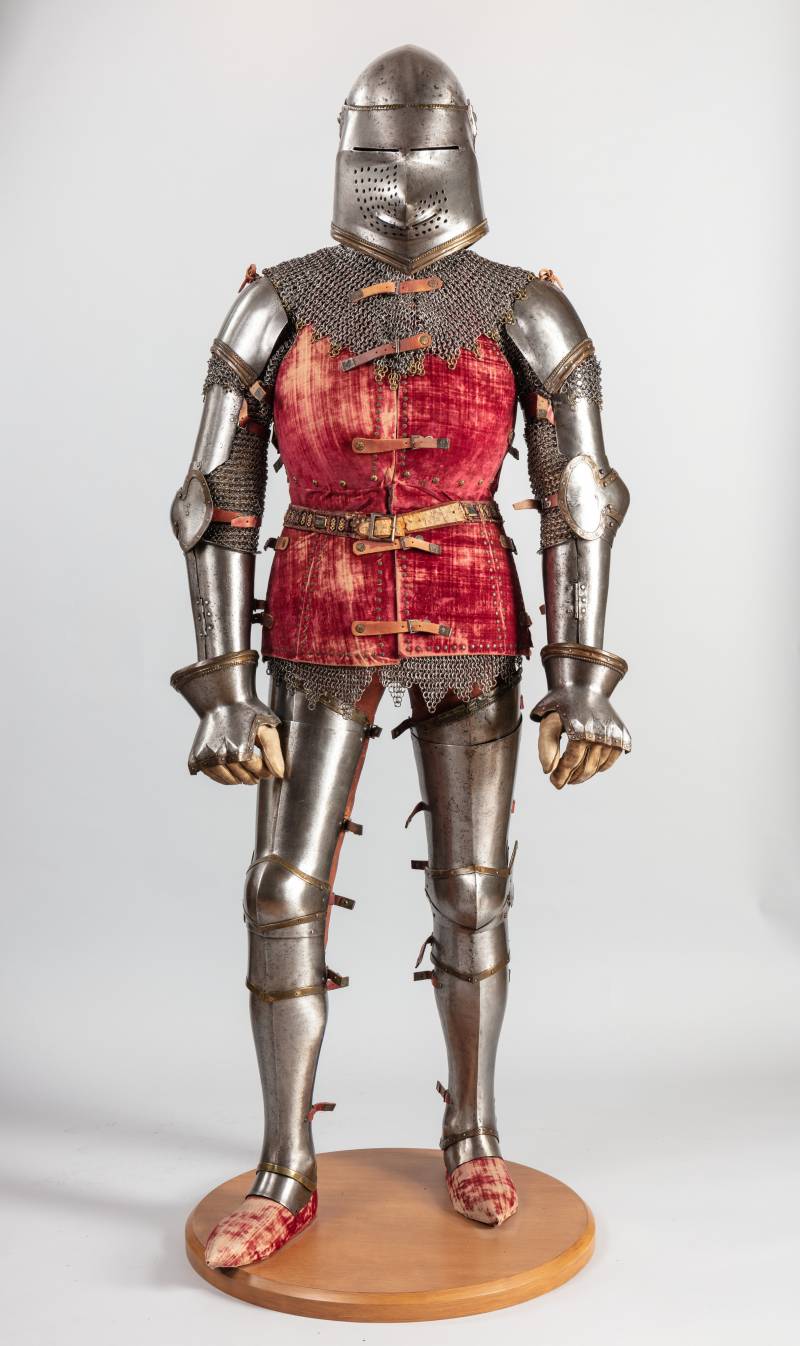
This is what a typical 1450 knight looked like. He wears a Bundhugel helmet (“dog’s face”) with chain mail, a woven brigandine (in this case, faded red velvet) and plate covers on his arms and legs. All-forged cuirasses, all the more decorated with patterns, we will not see on them. And the knights who participated in the Battle of Grunwald both from the side of the Crusaders and from the Polish-Lithuanian army looked about the same. (Metropolitan Museum of Art, New York)
So, the canvas is in front of us. Let us begin to examine it from left to right and look very carefully: we suddenly see something that will allow us to look at this canvas in a completely different way. What do we see on it?
To begin with, we determine that it shows perhaps the most important moment of the battle, namely the assassination of the master of the Teutonic Order, Ulrich von Jungingen. And here we make the first remark, which is equally relevant to the entire canvas. All knights of the foreground fighting on it are shown either without helmets, or in helmets without a visor. It is clear that this could not be by definition, but on the other hand, and how then the artist could depict all recognizable and iconic characters. That is, he could, of course, but ... he didn’t do it the way it should.
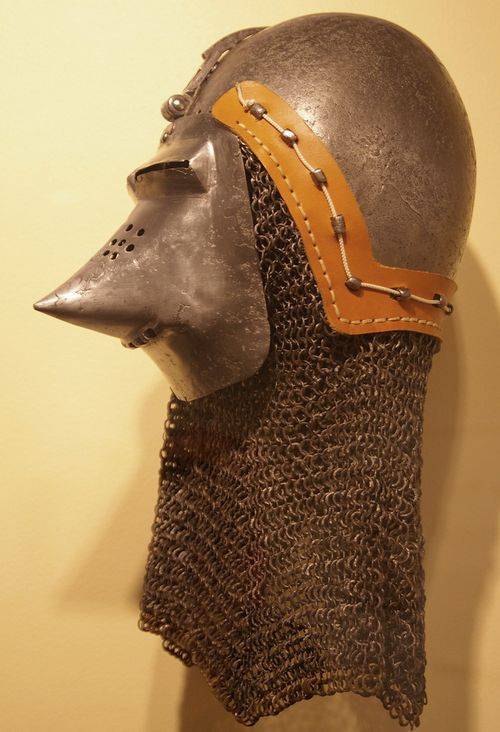
Bacinet 1380-1410 (Higgins Arsenal, Worcester, Massachusetts)
On the left in the upper part of the canvas, we see that the battle for the order army camp has already begun, but right in front of us are three impressive figures: a knight on a raven horse and in a fluttering blue cloak, turned to the pursuer with a spear at the ready. This knight is Prince Casimir the Fifth of Szczecin, who fought on the side of the Order. So. He took the oath of allegiance and had to fulfill it. By the way, the second Pomeranian prince, although he signed an agreement with the crusaders, Bohuslav the Eighth Slupsky, did not appear to fight for them. Pursues the traitor Casimir, the Polish knight Jakub Skarbka from the Mountain. Moreover, his squire on foot overtook his master, the horseman, and had already managed to grab the enemy horse by the occasion. Two details here are of particular interest. For some reason, the bow in the armor-bearer's hand is shown with a bowstring lowered, curved in the opposite direction. And here is the question: why doesn’t he pull it, and if the bowstring is torn, then why doesn’t he abandon and fight with his sword, or what is there in store for this? Then he would not have to grab hold of the occasion with his left hand, which is inconvenient in every sense, unless he is left-handed. The second detail is Casimir's helmet. He didn’t pick it up, but was decorated with an impressive “peacock-feather” tire, which obviously fell off his helmet, although it is not very clearly visible with his hand with a sword. But you can see the top of the hilt of the sword is drawn very carefully. It is very rare in shape and somewhat expanded relative to the crosshair. Of course, much is allowed to the masters of painting, but this is already a matter of technology. He wears plate gloves with fingers, by the way, like on many other combatants. And this is not typical for the year 1410!
Then there were fingerless plate mittens in use, and gloves with fingers appeared only in the XNUMXth century, when armored men needed to shoot pistols. By the way, under the hooves of the horse of Casimir lies the cannonball. That is, the artist took into account such a "trifle" as the use of artillery at the beginning of a battle. Knights didn’t bring any success to the knights! There is a third detail - this is the shield of the Polish knight Jakub. It is round with four umbons. Typical Indian-Iranian Dhal. The Turks also had similar shields, but ... much later! He should be given a knightly tharch or a paveus ...
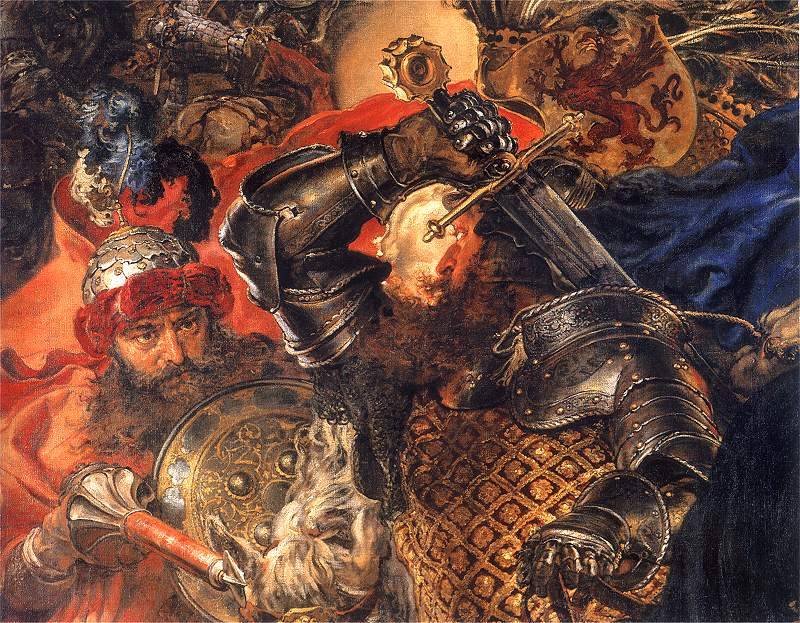
Here is this piece of the picture ... As you can see, all the details are written simply masterfully
By the way, the result of this battle was that Kazimir, like Prince Olesnitsky, who supported the Order, Konrad Bely, was captured. And what do you think happened later? They were chained, upturned on the first bitch? Not! King Vladislav invited them to a feast on the occasion of the victory. “From the side of the king, a more affectionate circumvention was shown than this corresponded to their position as prisoners. They were easily released, although their villainous deed would require worthy retribution, ”wrote Jan Dlugosch on this subject.
Next, we see a bearded old man, somewhere lost his horse, who looks with horror at how his master is being killed. This is the commander of Elbing Werner Tettingen, about whom we know that he shamed the master before the fight, seeing the latter's indecision, that, they say, you need to behave like a man and not like a woman. But he, however, did not behave as he advised others: he fled from the battlefield, and fled to Elbing itself. But he didn’t stay there, but decided to take refuge in the impregnable Marienburg. True, the question arises, where did he get the horse, if in the hottest place of the battle, and even among the riders he darted on foot, and even with his head uncovered ?!
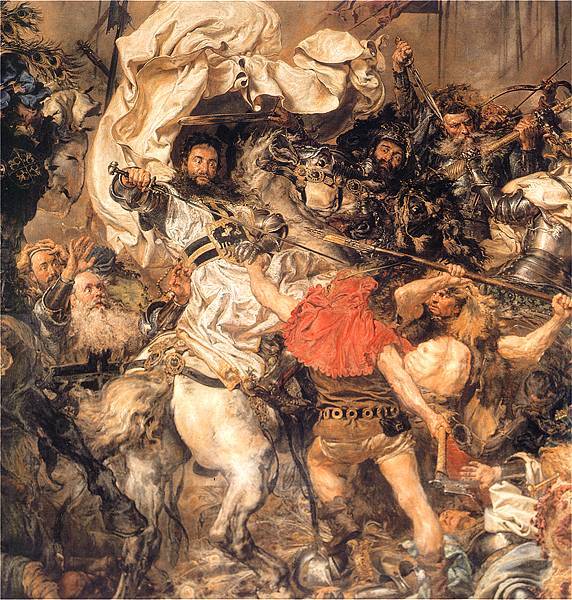
That's how they him, that's how!
To the right of this bearded old man we see Master Ulrich von Jungingen. The horse under it is so small that you can’t even see it right away, although the master could have had the tallest and strongest horse. Two foot soldiers are attacking him: one half-naked, but for some reason in the lion's skin, is preparing to hit him with a spear, and a man who looks like an executioner with his headgear, with an ax in his hand. Looking closer, we will see that the spear of this Litvin (and Dlugosh writes that it was the Litvin who killed the master, with a horn in the side) is not simple, but the famous "spear of Fate", which is stored today in the Vienna castle of Hovburg. It is very strange and incomprehensible how such a weapon could fall into the hands of a commoner, whoever he may be. Here there is solid symbolism, they say, Providence itself was against the crusaders.
By the way, the Lithuanian Tatars are of the opinion that the Grand Master was killed in combat with the khan Dzhelal-ed-din - the commander of the Tatar detachment. A number of European historians believe that he was killed by a certain Bagardzin, however, also a Tatar. He was wounded in the forehead (that is, he lost his helmet!) And in the nipple, which means his armor was pierced through. What happened next, Dlugosh reports that the body of the deceased master was ordered by Jagiello to be laid on a cart covered with purple cloth, and then sent to the fortress of the crusaders Marienburg.
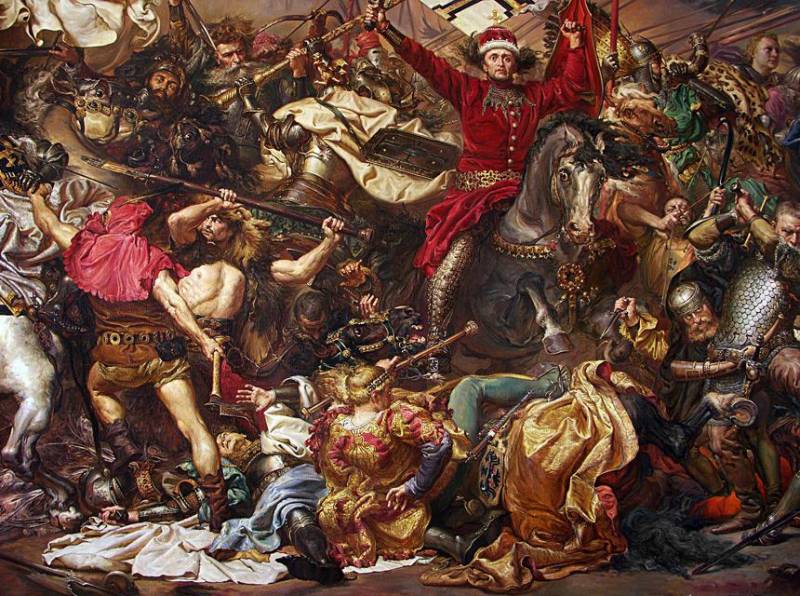
Another clearly symbolic image is interesting. Exactly under the ax of "man in red" on earth is the dying great commander of the Order Konrad von Liechtenstein
In the center we see the scene of the struggle for the banner, that is, the Order’s banner, the “Small Banner” (judging by the book of the same Dlugosh), because the “big” one had three pigtails at the base of the cross. And then the Grand Duke of Lithuania Vytautas, who was also called Vitold, Vytautas and even Alexander. He received this Christian name at baptism, and he was known under him in the Catholic West.
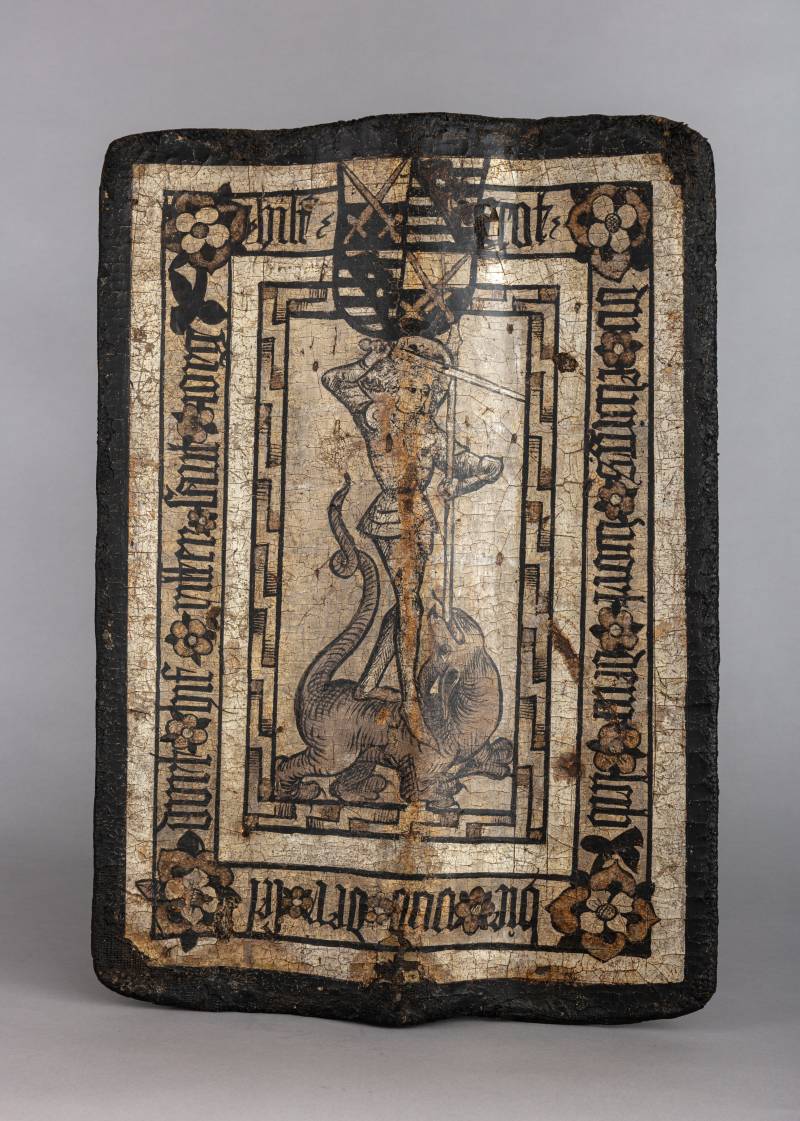
The shield-paveza is similar to that depicted in the picture. OK. 1450-1475 Germany, Saxony. The inscription on the shield around the figure of St. George reads: “Help, knight St. George; help God, your eternal word, the body is here and the soul is there. " Above is the coat of arms of the Duchy of Saxony, decorated with crossed swords, a symbol of the post of Elector of Saxony, as archimarchal of the Holy Roman Empire. Dimensions: Height 65,1 cm, width 44,5 cm. Weight 3230 g
For some reason, Vytautas is depicted on some unprepossessing, tiny little horse, without a shell and without a helmet, but with an unfastened chain mail mask and legs “chained” to metal, covered with scaly “armor”. The prince has a well-marked red yopul (a kind of doublet, popular in Poland at the beginning of the XNUMXth century) and with a princely velvet miter on its head, crowned with a cross on top. Obviously, this is not a battle suit, but already a shield in the left hand and completely from the realm of fantasy. Dlugosh wrote that he “rode around the entire Polish and Lithuanian army” ... and also: “During the battle the prince acted among Polish troops and wedges, sending new and fresh warriors in exchange for tired and exhausted and carefully monitoring successes both sides. " That is, the prince was here and there, and managed to do everything, and everywhere he visited. It may be so, but still he should have drawn a bigger horse for all these “trips” ...
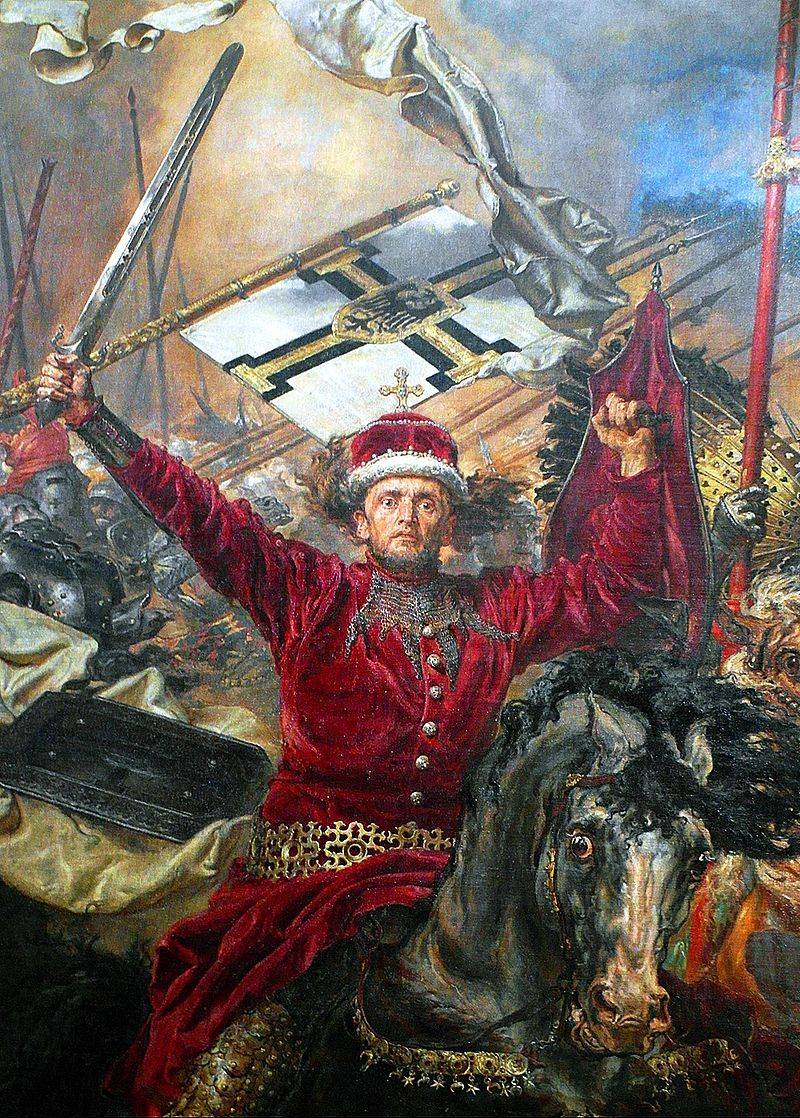
Vitovt-Alexander
Interesting “pictures” can be seen behind the prince’s back. This is an archer, launching an arrow somewhere in the sky, as if there were no enemies nearby, and clearly visible next to the sword, which he holds in his hand, a spear with a trident tournament tip. Did the artist really not know what it was? And nobody was there to point him out? Amazing, just amazing!
To the right behind Prince Alexander, another curious character is depicted: the Cracow coronet Marcin of Wrocimitz, the knight of the coat of arms of Semucosa. In one hand, he squeezes the shaft of a fluttering royal banner, and in the other he has a horn. Apparently, he is preparing to blow the victory. It may be so, but here is the helmet on his head ... not at all in 1410. Such helmets in the Polish cavalry appeared only in the XNUMXth century, and their “wings” themselves were not decorated with any additional feathers. To the right, we already see two anachronisms at once: the tournament helmet “toad head”, which also appeared a little later, and again the Turkish “turban helmet” of the XNUMXth century. Apparently, the artist did not care what the warriors depicted by him were on their heads. There is another archer right there, firing arrows into the wind, but we are interested in a warrior (again without a helmet) in a scaly shell and with a horn behind his belt, which cuts a knight's sword in a green jupon and with an orange cape on his head.
This "shell" is the legendary Jan Zizka, who participated in this battle as a mercenary and lost one eye in it. And he cuts with a sword Heinrich von Schwelborn, commander of the Tuchol. Moreover, someone sneaks up from behind to hit Zizka in the back with a dagger, but apparently he didn’t hit, he hit him with pleasure, but the armor withstood. In the lower right corner of the picture, the Tatar threw a lasso around the neck of Brandenburg Commander Marquard von Salzbach and pulls him off a horse thrashing on the ground. His fate was sad, although he himself was to blame for it. The fact is that during the meeting of Prince Alexander with the master of the Order in Kovno, he and another knight, according to Dlugosh, insulted the honor of his mother (oh, how we all know this well, don't we ?!) and thus aroused his just anger.
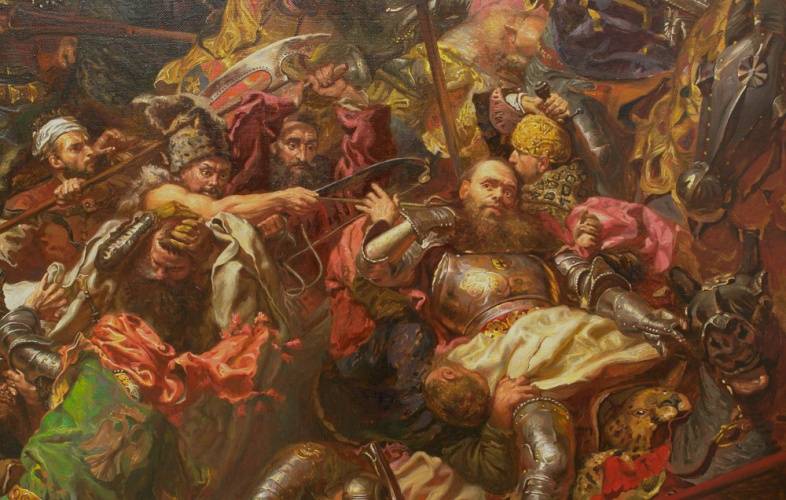
The capture of Marquard von Salzbach
Upon learning of their captivity, he immediately ordered to chop off their heads. Jagiello managed to dissuade the cousin from such an unkind act, but Marquard, facing the prince, inflicted a new insult to him. Well, it is clear that the patience of Alexander on this was exhausted and both knights immediately lost their heads!
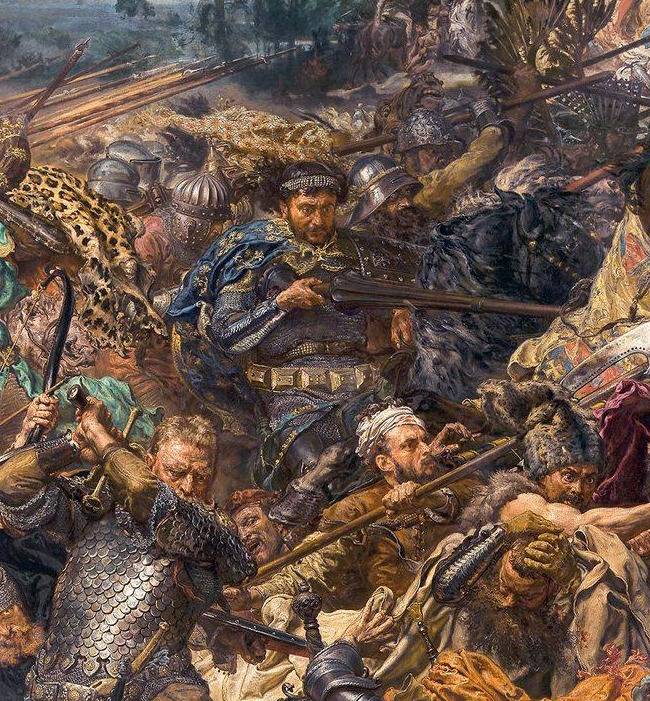
Dependent Black
A little higher, again, a knight without a helmet with a spear at the ready and rushes in a purple coat ... it is not clear where and marks it incomprehensibly into whom, but most importantly, this is none other than the famous Polish knight Zavisha Cherny from Gabrov, the coat of arms of Sulim. It is known that they nicknamed him so because he always dressed in black. Why, then, is he a purple cloak? And in addition he has a tournament, not a battle spear. By the way, we see another spear with a blunt tip against the background of the banner of the city of Brownsberg, depicted in the far right corner. The berdysh is also impressive, with holes in the butt, clearly belonging to one of the city's Russian archers or watchmen of the XNUMXth century. Rings were inserted into them, and they thundered at night, bypassing the dark streets with a watch. But why is this here?
In the background, in the same upper right corner, we can see King Vladislav, who did not participate in the battle, unlike cousin Alexander. Which, however, is understandable - just his bodyguards did not let the king fight, because at that time ... he still did not have an heir.
Taking a closer look, just between the figure of Zavisi and the king, one can also see something quite strange — the winged Polish hussars with “wings” behind their backs, the “thing” in 1410, well, completely impossible. By the way, under the banner of Brownsberg we see a knight in a helmet with peacock feathers (a clear tribute to the novel of Henryk Sienkiewicz “Crusaders”) of the Bourguignon type, again from a completely different era. And this is not just a bourguignot, but a bourguignot “from Savoy” with a characteristic visor, designed in the form of a grotesque human face.
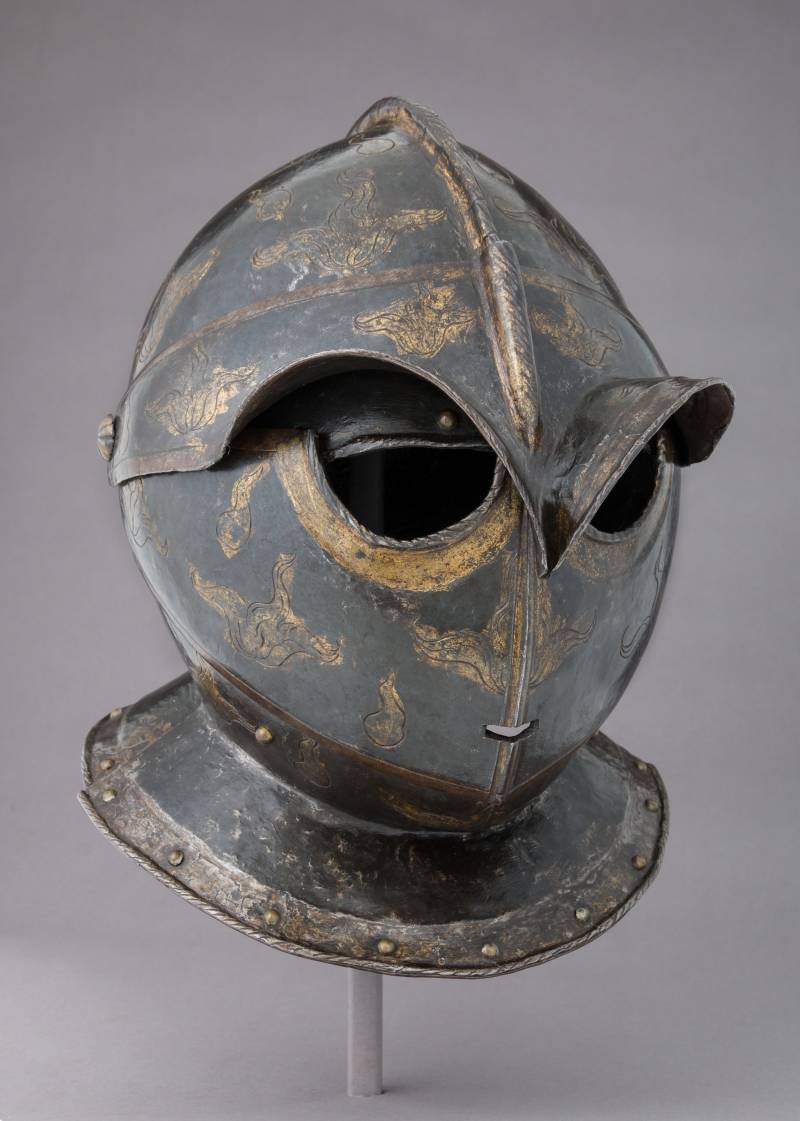
Bourguignot-Savoyard Italian work (type "Savoy", possibly made for Theodore Agrippa d'Aubigne (1552-1630). Circa 1600-1620. Weight 4391 g
Well, of course, the epic picture is added by the figure of the kneeling St. Stanislav, one of the heavenly patrons of Poland, praying for the victory of Polish weapons. For some reason, the wreckage of a knightly spear that had broken due to a blow soar into the sky to him, as if it was impossible to do without this detail.
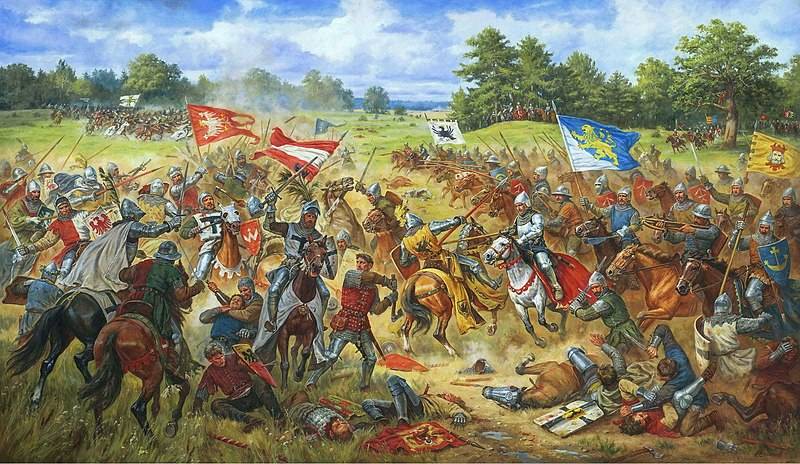
“Galician Banners in the Battle of Grunwald on July 15, 1410” Painter Arthur Orlonov. Everything is historical here. Except maybe the equestrian crossbowman on the right. And so ... Helmets, armor, everything seems to be copied from a figure from the Metropolitan Museum of Art ... But something seems to be missing? And what exactly? Yes, here's the thing - epic!
As a result, we can say that this painting by Yana Mateyko is certainly a masterpiece and painted expertly, and it has legally gained international fame as a vivid example of romantic nationalism. Nevertheless, there are too many epics in it, but there is almost no historicity at all. However, the master, apparently, when he wrote it, did not set such a task for himself.
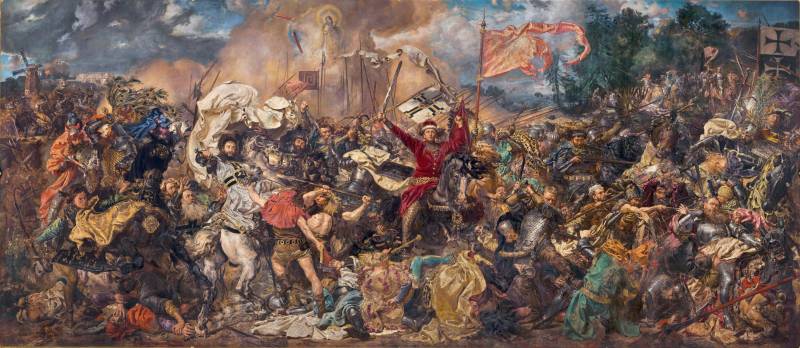
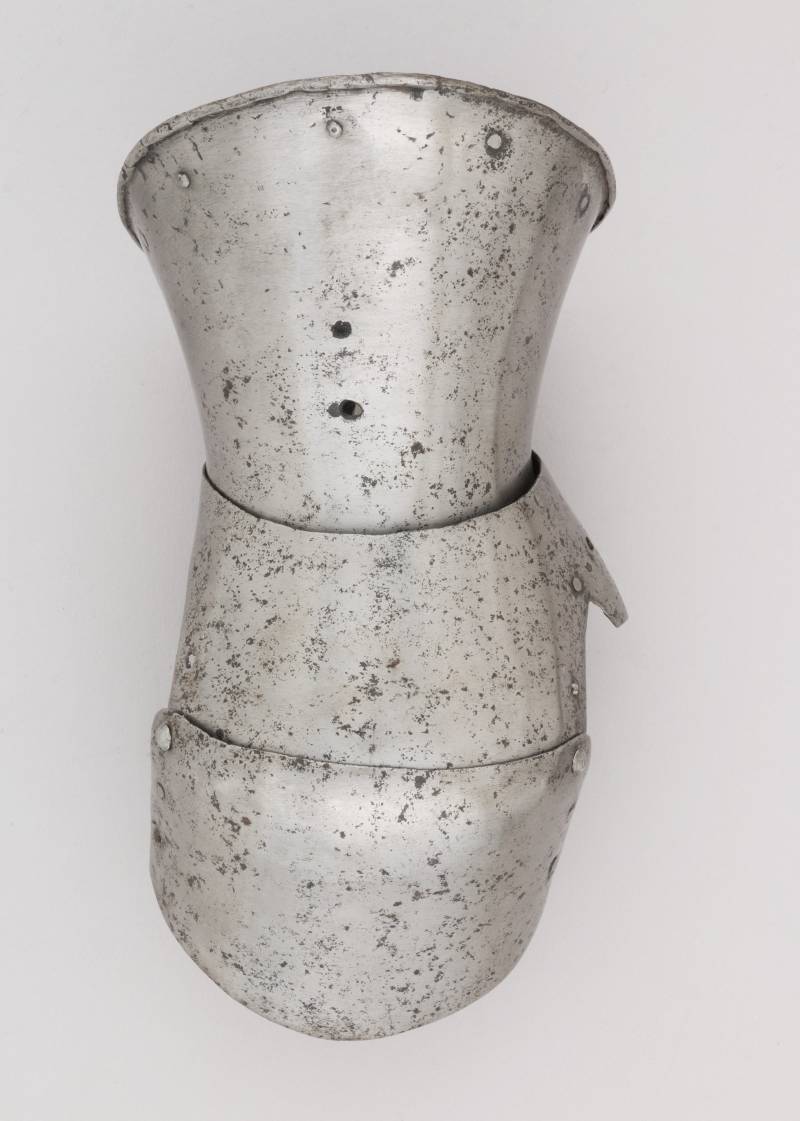
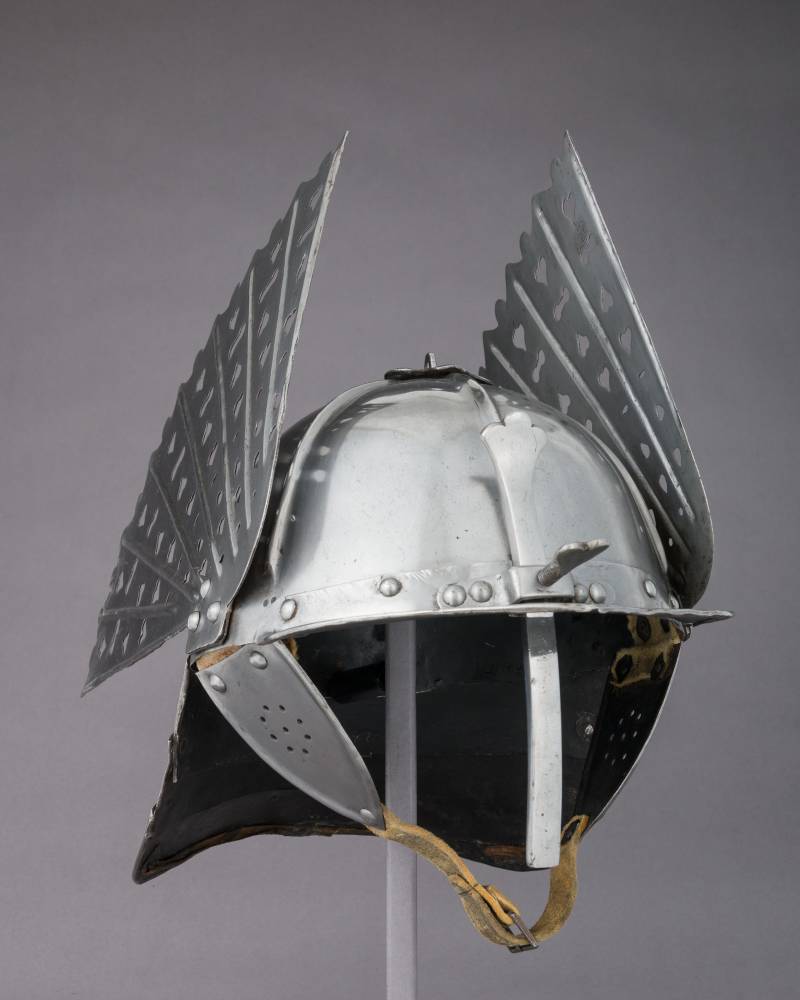
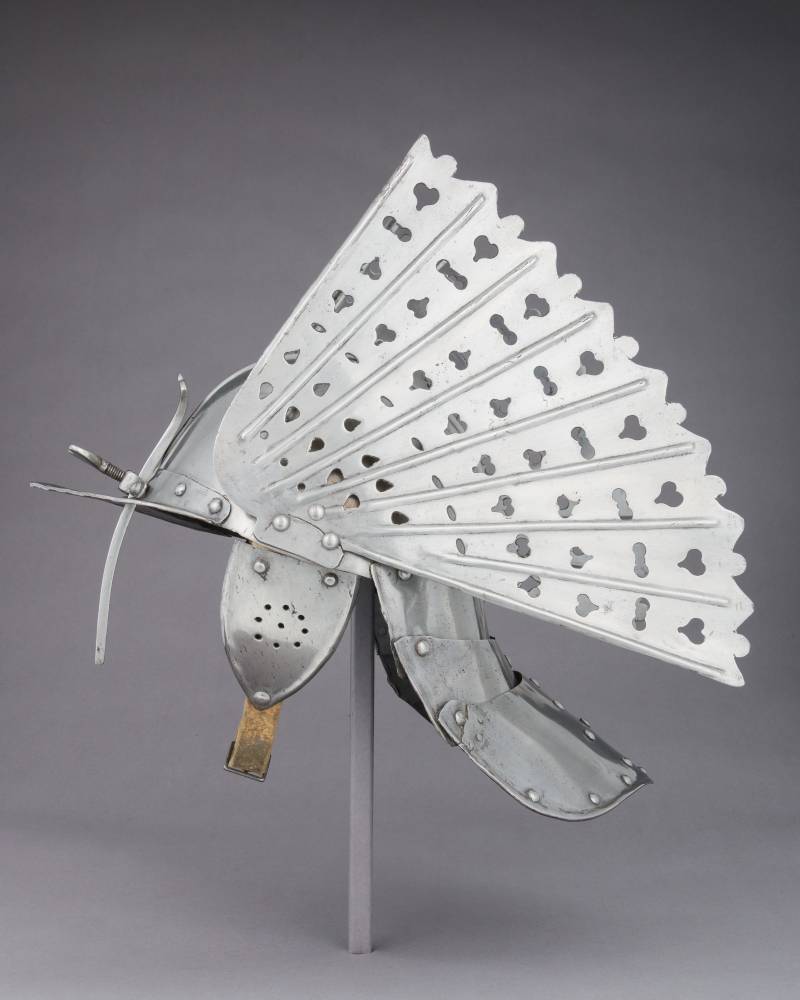
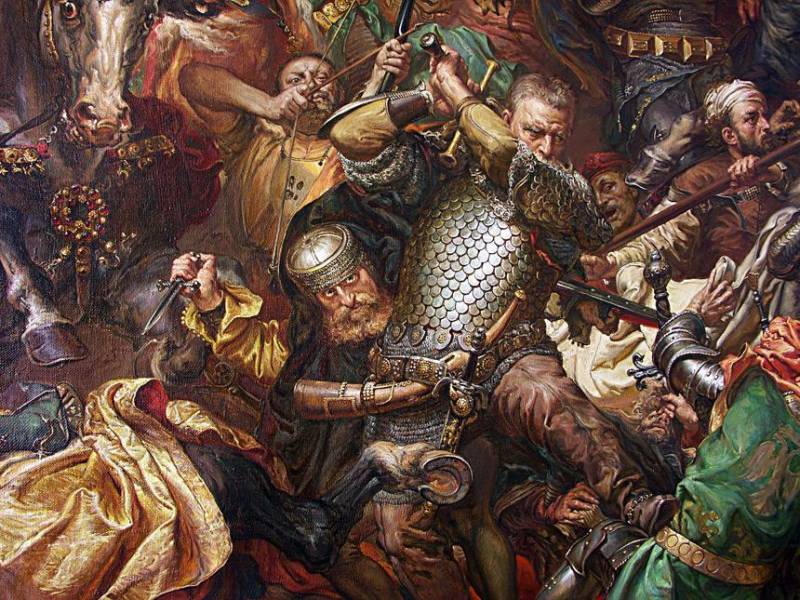
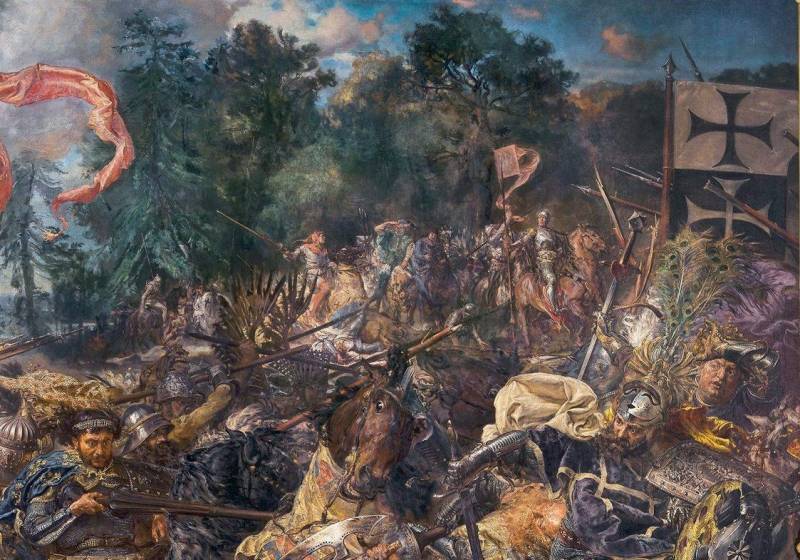
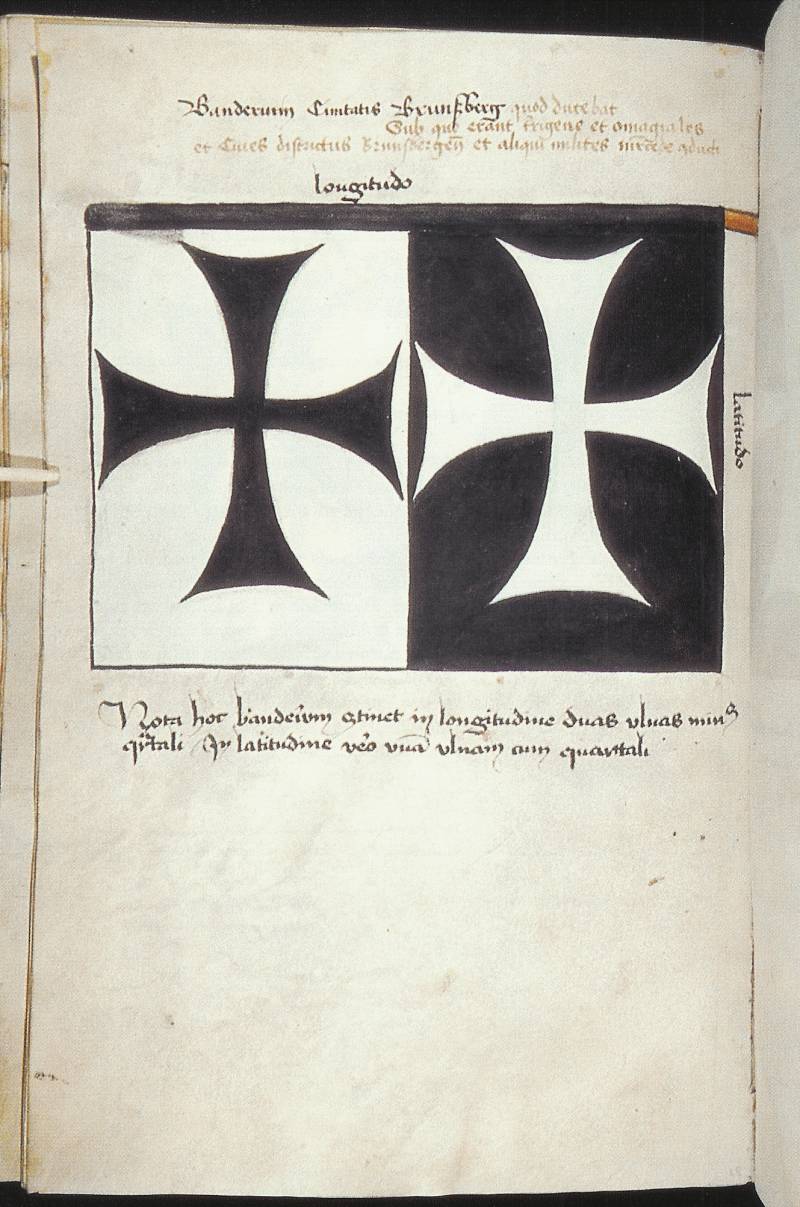
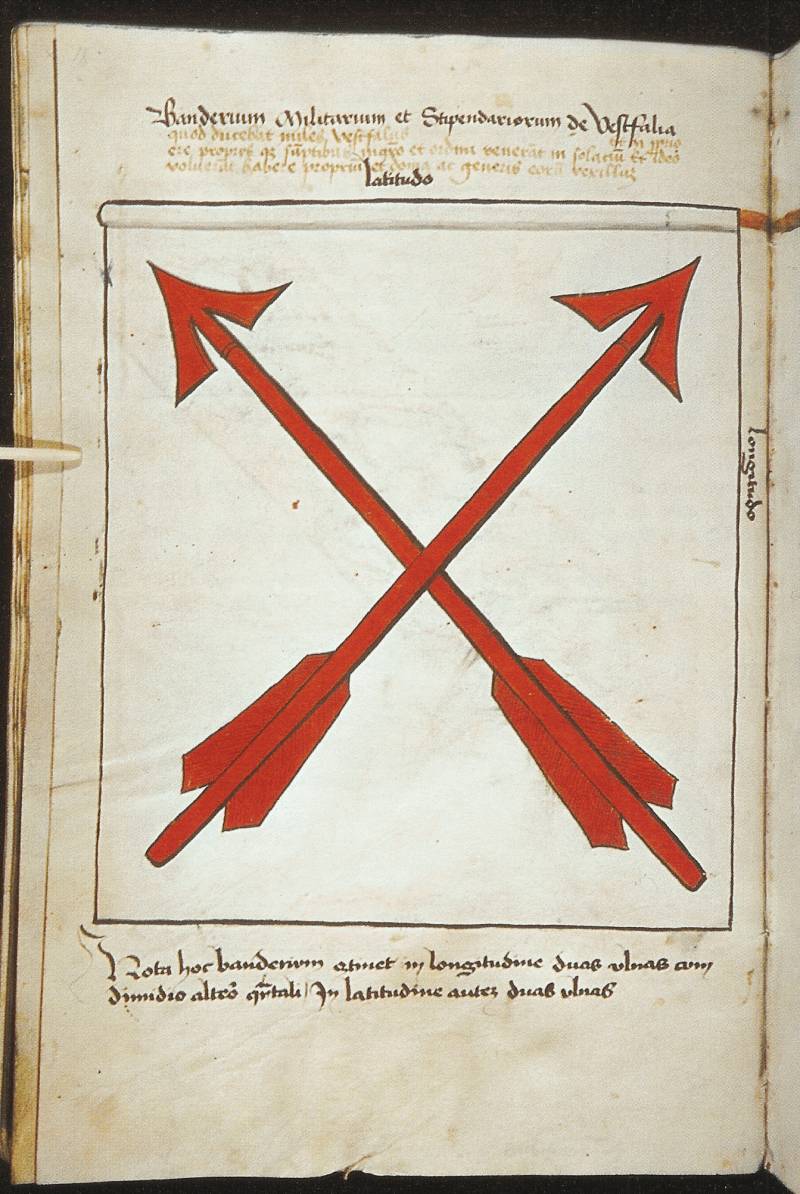
Information